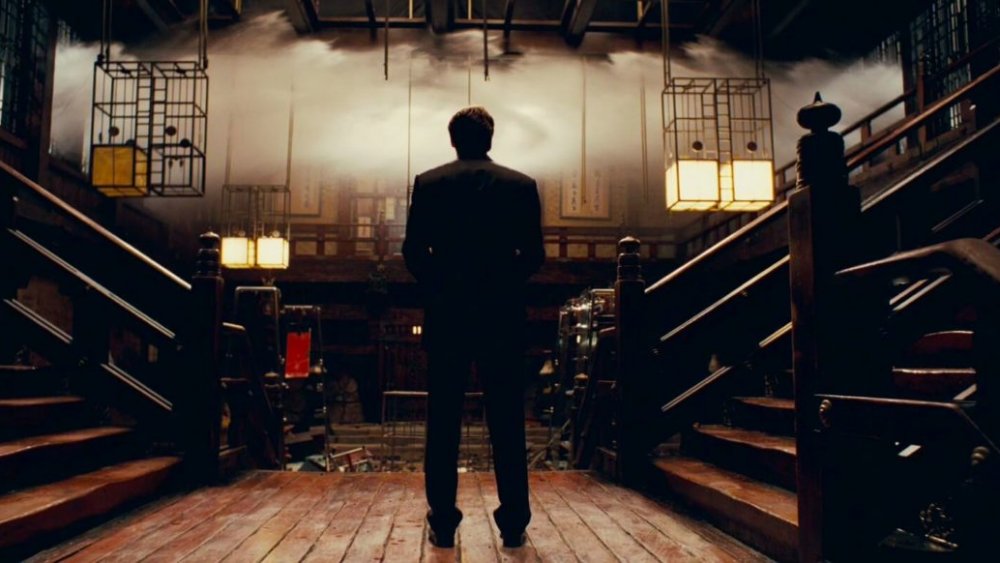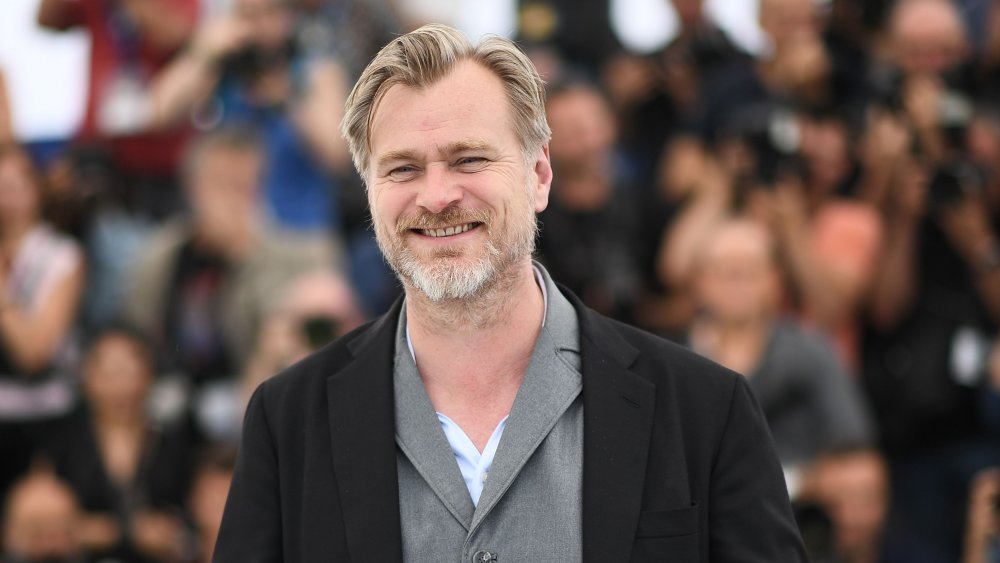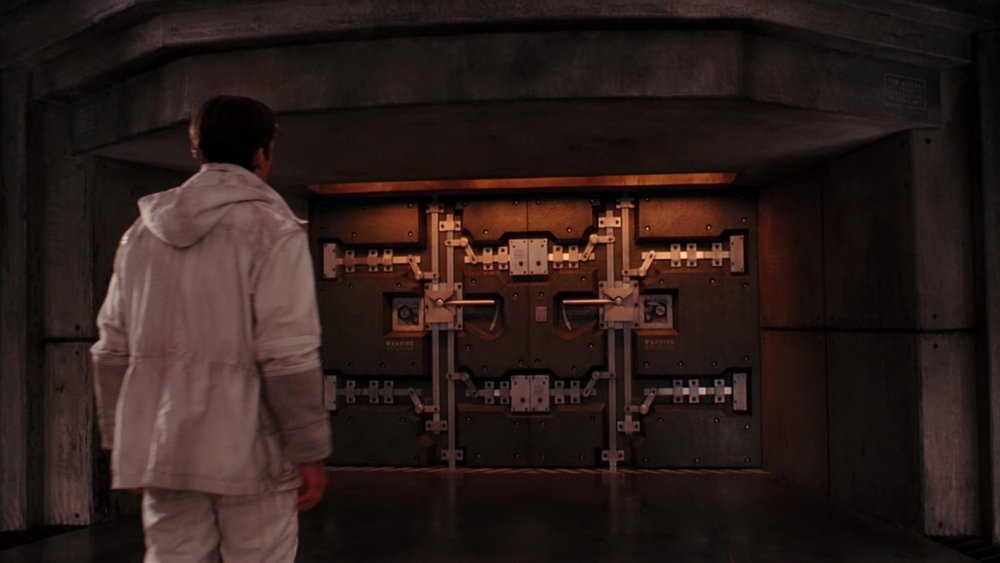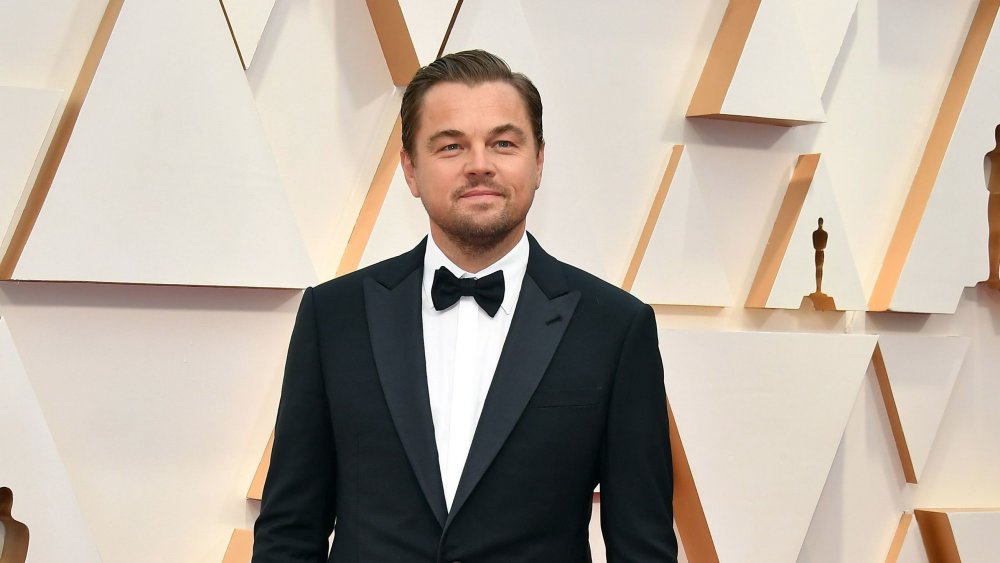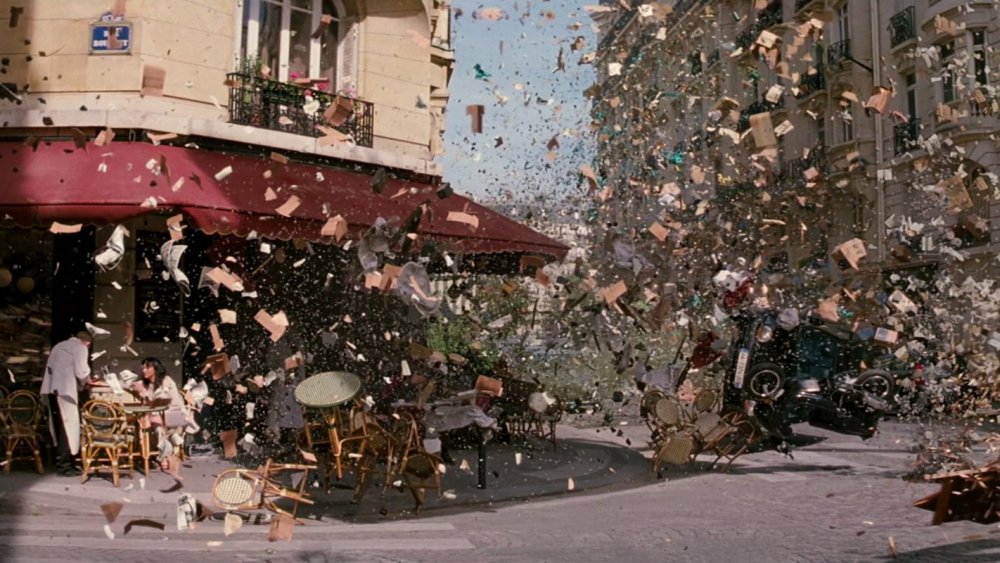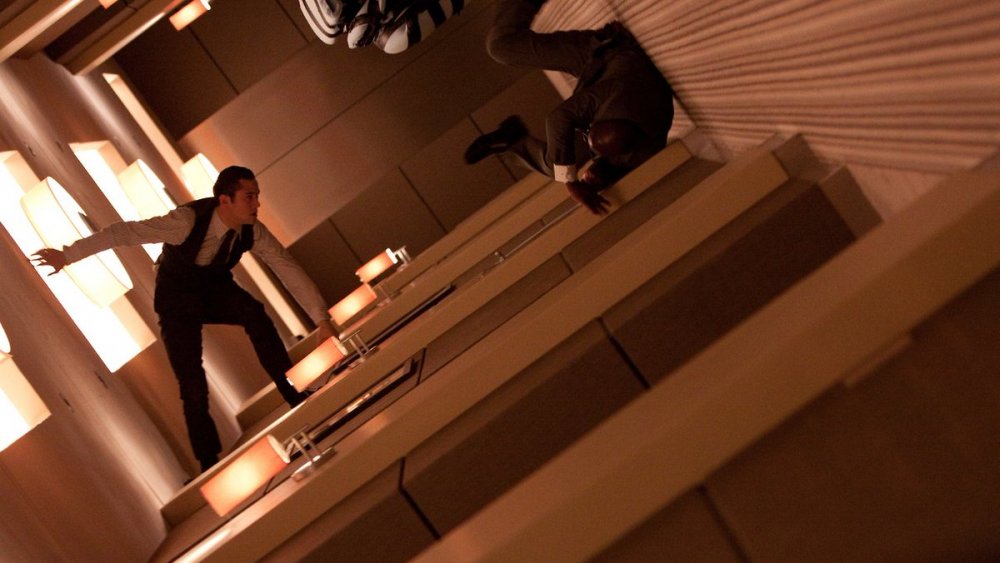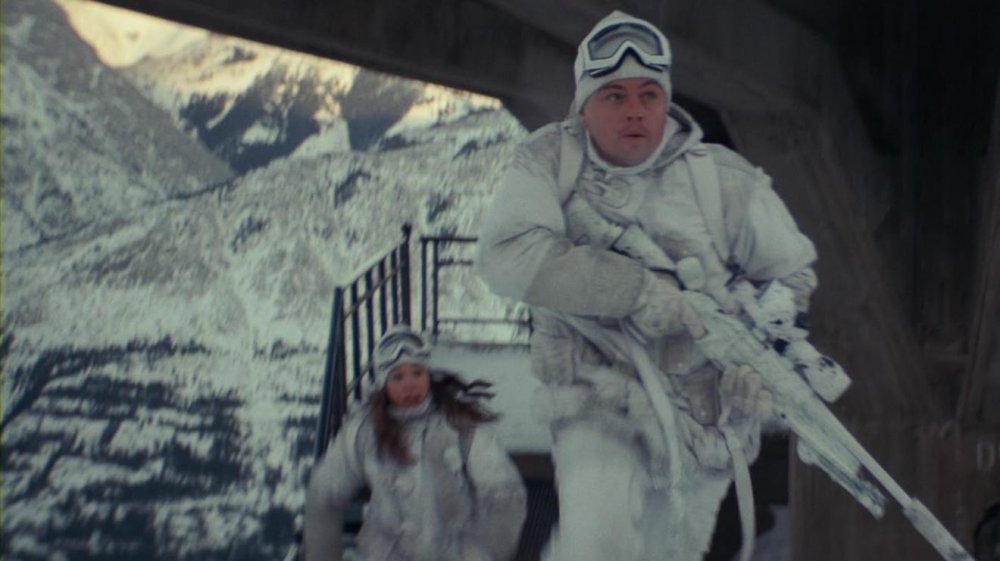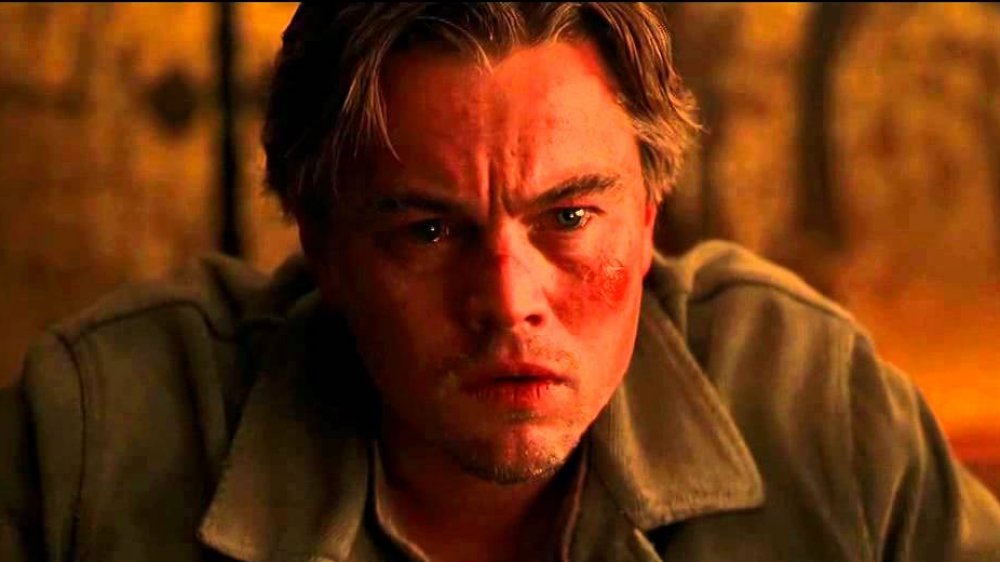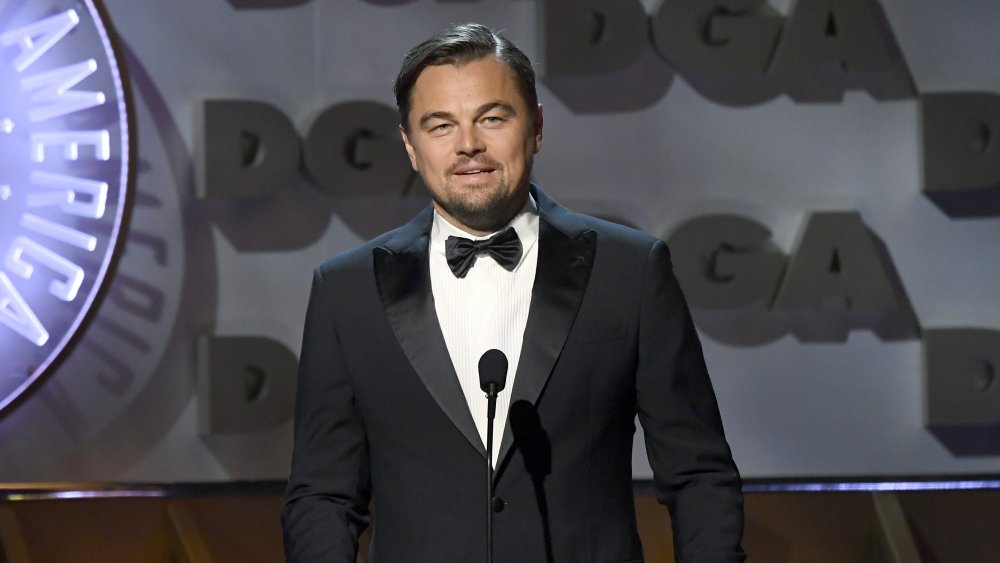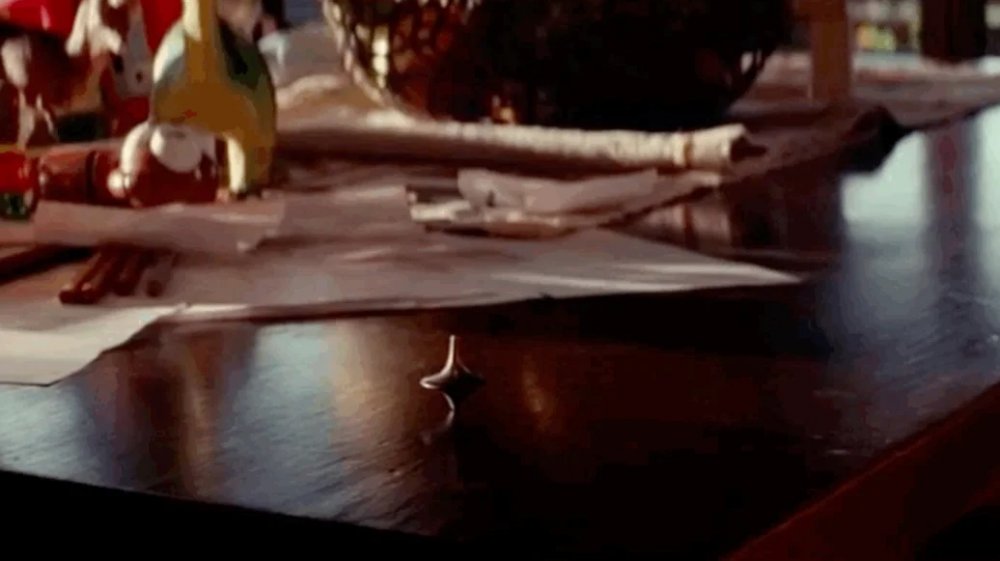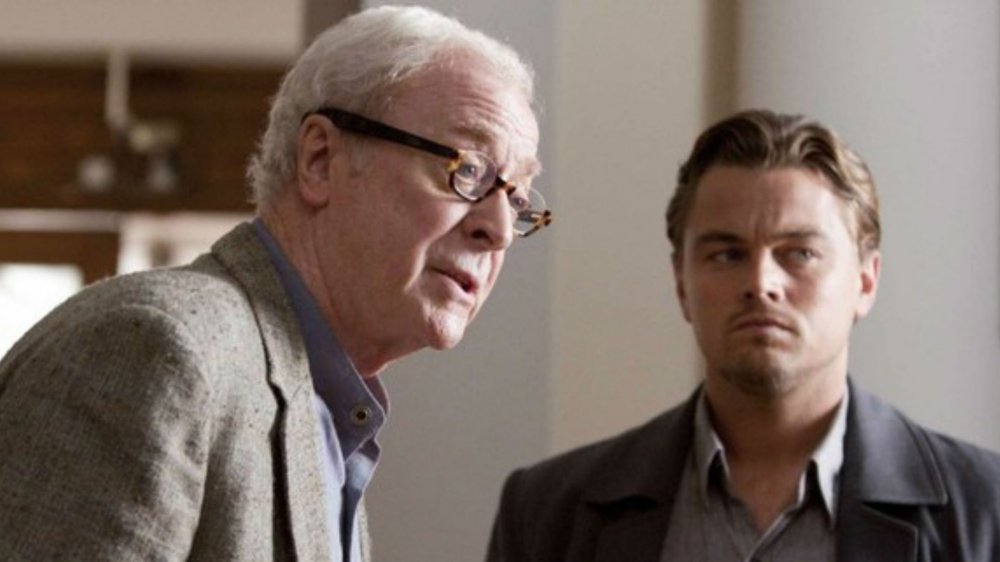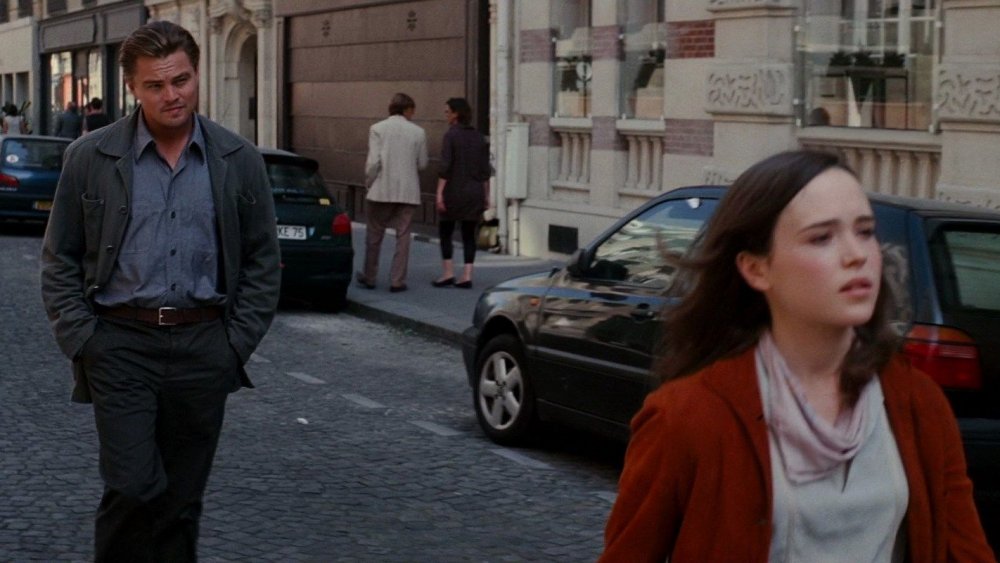The Untold Truth Of Inception
When Inception came out in 2010, audiences and actors alike struggled to understand exactly what they had witnessed. As Elliot Page, who plays dream architect Ariadne, put it diplomatically, "I think it's purposefully murky, keeping things unclear and making you ask questions." But as Page later noted, the more questions we asked, the deeper we were drawn into director and writer Christopher Nolan's world of dream espionage, angry subconscious projections, and spinning tops. "Inception" became shorthand for something multilayered and illusory. Another sure sign that the film had entered a fixed point on pop culture's radar was when it was parodied on shows including The Simpsons, South Park and Rick and Morty.
Inception wasn't Nolan's first experience in capturing the zeitgeist. In 2008, the second film in his Batman trilogy, The Dark Knight, changed the concept of what a superhero movie could do and be. That film's success made Nolan a household name whose reputation extended beyond movie buffs and superhero nerds. But previous films like Memento, Insomnia and The Prestige had already put him at the top of the Most Wanted list among actors looking for blockbusters with unusual depth. Inception united many of those actors, pushing them and the crew to think and work harder than ever in pursuit of Nolan's vision. This is the untold truth of Inception.
Nolan dreamed up Inception 10 years before its release
Inception premiered in the US on July 16th 2010, but Nolan had been toying with a movie about dream worlds for a decade by then. His long-time producer, collaborator and wife Emma Thomas explained that every couple of years, once he'd finished another movie, Nolan would return to the script, and that he "grew into this project."
This long delay ultimately worked in Inception's favor. In the time between writing the first draft and putting the film into production, Nolan worked on other projects that taught him logistical and practical skills that helped him bring his grand vision for the film to life.
Notably, Nolan credits his experience on The Dark Knight with giving him the confidence to take on a global shoot schedule and the large-scale effects necessary to create Inception as he saw it in his mind. "Coming out the other side of that experience and having enjoyed it as much as I did left me feeling like we had a great team of people who could devise and photograph these kinds of visuals. I came away feeling well equipped to take on the world of Inception and the kind of outlandish imagery it would require," he told Deadline.
Inception started out as a heist movie
Nolan has said that one of the reasons he struggled for so long with Inception was because he initially came at it as a heist movie. He reasoned that this is the one genre where the audience doesn't just tolerate a lot of exposition: We actually see it as part of the fun. Like many sci-fi movies that introduce unrealistic technology, Inception involves a lot of explanation. That could easily have weighed down a film that ended up running for nearly two and a half hours.
However, Nolan came to see that the heist structure brought its own issues. "I eventually realized that heist films are usually unemotional. They tend to be glamorous and deliberately superficial," he told Wired. That didn't square with an exploration of dreams, which are inherently personal. Nolan said that his light bulb moment came when he incorporated an emotional element into the core of the plot: The tragic love story between Dom Cobb and Mal. "I figured out the emotional connection of the central character to the audience and made this about following his journey home to his children and his love for his wife," Nolan explained. So the recipe for genre-bending success is sci-fi, plus heist, plus romance.
Casting was based around one actor
Nolan pictured Leonardo DiCaprio as Cobb, head of the heist team, from the start. He could bring the emotional element Nolan felt was essential to connect the audience to the film's complex storytelling. Moreover, he knew DiCaprio would be a strong creative partner. "We had a lot of creative collaboration on the script once he came onboard; it became a hugely valuable part of the process," Nolan said.
The rest of the cast was hired based on their chemistry with DiCaprio. In particular, Nolan wanted to make the then-35-year-old actor look like a plausible leader of a gang, which meant introducing what he called, "a young, energetic cast around him who wouldn't make him look younger ... it was important that Leo ... felt like the most mature."
That's not to knock DiCaprio's co-stars: The Inception cast list reads like a Who's Who of 2010s Hollywood. Nolan selected Tom Hardy (who plays identity thief Eames), Joseph Gordon-Levitt (as researcher Arthur), and Elliot Page (dream architect Ariadne) to fill out Cobb's crew. Page in particular served a very specific role. "I was really looking for somebody who could make a real character out of what is an essential device ... the person who's got to ask all the questions for the audience," Nolan explained. He praised Page's "creative intelligence" as "exactly what the part demanded."
Nolan was determined to do practical effects
For Nolan, one of the big draws of making a film about dreams was the chance to explore grandiose cinematic worlds that make sense only in someone's imagination. But paradoxically, he was also determined to create as much of his out-of-this-world vision using in-camera tricks and practical effects as possible.
For example, take the scene where Page's Ariadne and DiCaprio's Cobb are sitting in a Parisian cafe that explodes around them as the dream falls apart. That was actually filmed on a Parisian street using air cannons that went off around the two actors. Nolan said that he knew there would have to be a visual effects component to the finished scene, but that digital techniques should be used to enhance the footage (adding in harder materials, for example), rather than creating the explosions from scratch.
Another scene they did for real? The "earthquake" at the very start. Normally for that kind of scene, the whole set would be on a rig. But in this case it was too big, so the effects team created the tremor effect by shaking the camera and the light fixtures, pushing over objects, and setting off trap doors that dropped debris from the ceiling. And yes, that really was DiCaprio running through it all.
It really is Joseph Gordon-Levitt in that corridor
In a film full of mind-boggling visuals, one of Inception's most jaw-dropping scenes sees Arthur fight one of Fischer's trained projections in a zero-gravity hotel corridor.
Nolan's crew actually built a 100 foot corridor inside giant steel circles that rotated on motors, housed in a World War I aircraft hangar near London. The director was inspired by Stanley Kubrick's 2001: A Space Odyssey, which used a similar effect back in 1968. There was also a separate vertical corridor set for the scene where Arthur loads his sleeping crew members into the elevator: The actors and stunt performers were lowered into that one on wires. The corridor sequences took three weeks and 500 crew members to shoot.
Topping it all off is the fact that it really is Gordon-Levitt in the majority of those scenes. He especially got a kick out of the fight scene, which looks seamless but was no small feat. Gordon-Levitt had only two weeks of rehearsal on the set, and slightly off timing could have seen him fall 12 feet. "I tried it. It was not easy and he far exceeded what we did," stunt coordinator Tom Struthers acknowledged. But Gordon-Levitt enjoyed the challenge. "It was just about the most fun I've ever had on a movie set. It was also, probably, the most pain I've ever been in on a movie set ... in a good way," he said.
Nolan paid homage to this famous British franchise
Some of the action sequences in Inception may have brought to mind another British legend. Nolan wanted the final dream level to be as dramatic as possible, and it doesn't get much more dramatic than a James Bond film. "I ... wanted the dreams in Inception to reflect the infinite potential of the human mind. The Bond movies are these globe-trotting spy thrillers, filmmaking on a massive scale," he said.
The hospital high up in a snowy mountain landscape was directly inspired by scenes from Bond films. Nolan wanted "an extraordinary bad guy's lair — some complex in the mountains." And so the crew built the fortress in Calgary, Canada, and prayed for early snow, which came just before shooting began. When the action was done, they completed the Bond homage with a full-size explosion. "It just lends itself so perfectly to blowing up," summarized special effects supervisor Chris Corbould, who has also worked on multiple Bond films. But the fortress proved resistant. The charges in the front didn't go off, and they failed again on a miniature. However, Nolan managed to cobble together enough footage for a convincing destructive shot. Corbould and his team won an Oscar for Best Achievement in Visual Effects for their efforts on Inception.
DiCaprio got immersed in the world
One of the reasons Nolan thought DiCaprio would work so well as the film's emotional core was because of "his dedication to script and script analysis and defining the truths of the character." True to form, DiCaprio said he went all in to get into Cobb's head. He and Nolan spent many hours fleshing out Cobb's relationship with his deceased wife Mal, which shapes Cobb's decisions and has repercussions for the rest of the characters.
The actor also started thinking a lot about the nature of dreams. He read books on dream analysis in preparation for the role, but said that what really helped was talking to Nolan, since the director's dream worlds have their own set of rules. Marion Cotillard, who plays Mal, also helped him untangle Inception's layers: "She was really game for these ... strange, philosophical conversations about how to play a scene where I'm in essence talking to my own conscience, and she is a manifestation of my own trauma," DiCaprio told NPR.
Unsurprisingly, Inception found its way into DiCaprio's own dreaming life. He said that even though he normally doesn't dream vividly, while promoting Inception he had a dream where "I entered the dreamscape and really applied all the rules of Inception ... I got to manipulate it from being a horrific nightmare into something quite positive. So that was a really interesting experience." Now that's taking method acting to the extreme.
DiCaprio does not understand the ending
During the Inception publicity tour, most of the actors said that despite the movie's many narrative layers, they found ways to keep track of which dream they were in in each scene. DiCaprio said that shooting in multiple, widely varied locations helped: "The snow-capped mountains of Canada, or ... Paris or London — you experience it and you have a visual reference. And it was a lot easier to understand than I ever thought it would be."
However, DiCaprio recently admitted that like many people who have seen Inception, he's still not totally sure what happened in the film. In a joint interview with Brad Pitt on Marc Maron's podcast, DiCaprio said of his movie, "What happened? I have no idea ... Sometimes you're just focused on your character, man." He added that he does try to get more involved, "But when it came to Chris Nolan and his mind and how that was all pieced together, everyone was trying to constantly put that puzzle together." DiCaprio's verdict on the ending, and whether it even makes sense: "Depends on the eye of the beholder, I guess." To be fair, Pitt admitted that he needs the ending of Ad Astra explained.
Nolan knows exactly what happened at the end — but he's not sharing
Although many people would still like the ending of Inception explained, Nolan knows exactly what happened with that spinning top. He told Wired that directors who make ambiguous movies need to know the truth at the center. "I think the only way to make ambiguity satisfying is to base it on a very solid point of view of what you think is going on," Nolan said. He added that the ambiguity should come from a character like Cobb who is confused and searching, who serves as a conduit for the audience. If you don't have an absolute answer, "it will contradict itself, or it will be somehow insubstantial and end up making the audience feel cheated," Nolan warns.
But don't expect him to share. Nolan learned the hard way not to explain the endings of his films at a press conference for amnesia thriller Memento, which is based on his brother Jonathan's short story. Christopher answered a question about the film's ambiguities by saying that they were open to interpretation — then explained all of them. Jonathan later pointed out that audiences don't hear the part where it's up to them, they just hear that this is what the director thinks. "It's the last time I ever opened my mouth," Christopher said. So if you need the entire Dark Knight trilogy story finally explained, don't go to Nolan.
Michael Caine knew the truth all along
There is one person besides Nolan who thinks he knows whether that spinning top falls over — and he's already spilled the beans. Michael Caine plays Cobb's father-in-law Professor Stephen Miles, who takes care of Cobb's young children. At the end of the movie, his meets Cobb at the airport after his eventful (on a subconscious level) flight home, following years on the run. Just before Cobb greets his children, he sets his top spinning, then leaves it without checking if it falls. Quick refresher: If it stops spinning, he's in the real world. If it doesn't, he's still dreaming.
Caine sidestepped the question entirely, giving fans a new way to figure out if we're watching a dream or a scene set in reality. In 2018, he said that when he got the script from Nolan, he asked the director how he could tell when they were in a dream or not. According to Caine, Nolan said, "Well, when you're in the scene, it's reality." Caine is very much in the scene: We see him at the airport and we hear him call the kids to come see their dad. Mystery solved ... or was this an elaborate double bluff? Perhaps Nolan knows better than to give away his endings, even to his actors. After all, one of the film's key messages is that our individual perception of reality is not always to be trusted.
You're probably overthinking this
There are a lot of knots to untangle in Inception, yet people still insist on tying more. Fans online have been combing for clues since the movie came out, resulting in a litany of theories. Nolan has been characteristically reluctant to comment on them, but he did tell a Wired interviewer that he'd "read plenty of very off-the-wall interpretations," and responded directly to some.
For example, the interviewer asked him why Cobb's son tells his dad that they built a house using building blocks, seen on the table. Is that a reference to dream architects? According to Nolan, that was just the child actor improvising. Also, as far as Nolan is concerned, Cobb and Saito (Ken Watanabe) are not still in limbo at the end. When faced with the theory that the whole film takes place in Cobb's head, Nolan responded with a non-committal, "Mm-hmm."
Just as reality becomes blurred and bendy for Cobb, what's really going on in Inception is up for grabs. "One of the things you do as a writer and as a filmmaker is grasp for resonant symbols and imagery without necessarily fully understanding it yourself," Nolan acknowledged. "And so there are interpretations to be imposed on the film that aren't necessarily what I had in my head." Whether that top falls or spins forever is all in your head.
